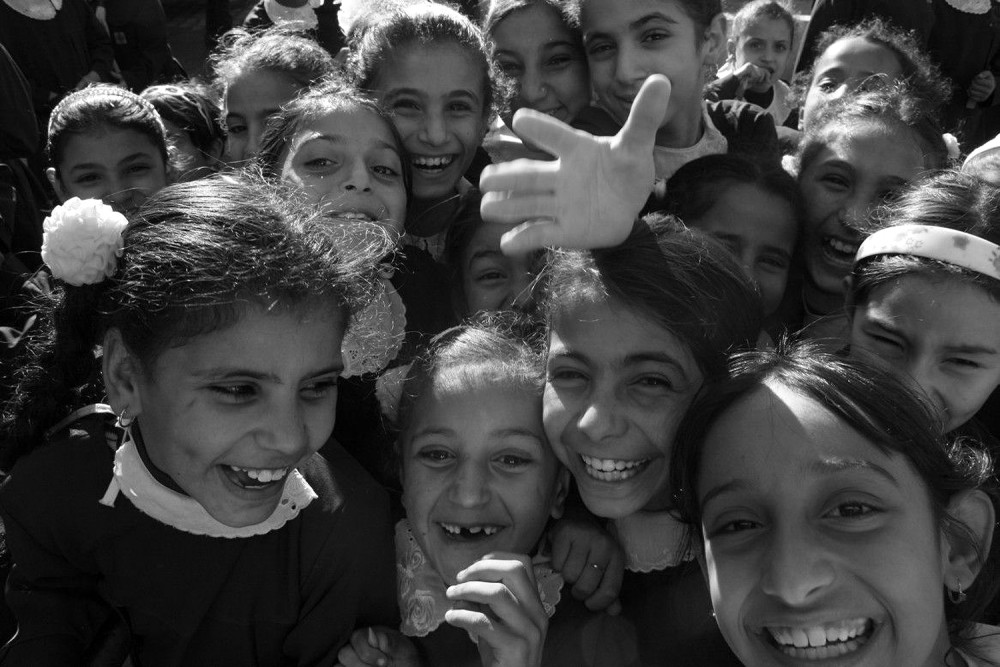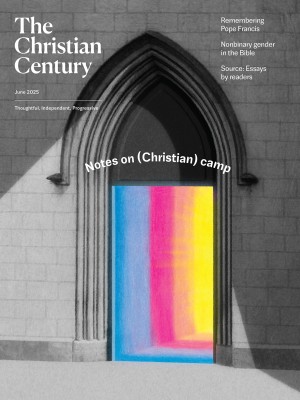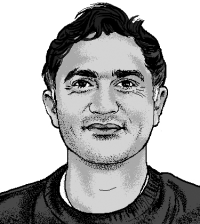Walking Palestinian children to school
The Israeli government’s expansion of its warfare into the West Bank has me thinking about my time there almost a decade ago.

Palestianian girls in Gaza City in 2008 (Mohammed Yousif Azaiza / gisha.org / Creative Commons)
In 2016 I joined a delegation from Christian Peacemaker Teams (now Community Peacemaker Teams) in the Palestinian city of Al-Khalil/Hebron, where we accompanied children on their path to and from al-Ibrahimiya kindergarten. The school is adjacent to the Ibrahimi Mosque, which is situated above the Cave of the Patriarchs, a multifaith holy place that marks the traditional burial site of Abraham and Sarah, Isaac and Rebecca, and Jacob and Leah. Palestinian families had discovered that sending their kids with international volunteers made residents of the nearby Jewish settlement think twice before throwing stones. That week, during my morning and afternoon accompaniment walks, there were no incidents requiring us to shield the students. But we did have to skirt around clusters of settlers, a few of them with rifles hung over their shoulders, who assembled along the path to taunt us.
One morning, when we reached an intersection at the edge of a settlement housing unit, I saw an older man rushing toward me. The other volunteers hurried the kids away, dashing with them down an alley, leaving me to face off with the man. I put my nonviolent de-escalation training into practice—slowing my breath to calm my nerves, resting my arms at my side with my hands unclenched, palms opened toward him. We had rehearsed, as a team, for this sort of situation. Our strategy was to keep the danger as far as possible from the children and, hopefully, to ease the tension. The man stepped up to me, his beard almost touching mine. “I am here in peace,” I said to him, softly yet firmly. Fuming, he spit at my shoes and cursed me, then headed back to his side of the street, returning to his compatriots.
Read our latest issue or browse back issues.
I found my group waiting for me around the corner. One of the children entrusted to me by his parents that morning took one of my hands, another child took the other, and each of them reached out for their friends’ hands as well. They seemed unfazed after the incident in the street. We kept on walking, them climbing and jumping from rubble, stomping in puddles, all while they sang and laughed.
As we neared the mosque and school, Israeli soldiers, with their hands latched to guns, watched us from a checkpoint station, uninterested in the long line of Palestinians waiting to cross from one zone into another—women in hijabs with grocery bags, businessmen with briefcases, day laborers with knapsacks, a young boy with a SpongeBob lunch box. I followed the students in my care up the steps to the building. We waited at a large iron door, which soon squeaked open. The kids, with my hands still clasped in theirs, pulled me in, excited to show me everything about their school activities.
This memory flashed through my mind when I read recent news accounts of the Israeli government’s expansion of its warfare into the West Bank, with its air strikes and bombardments of residential communities, as well as of the incidents of emboldened settlers who are ramping up their attacks on Palestinian villages. The death, the rubble, the decimation of life—I remember the sound, while I was with villagers in the South Hebron Hills, of weaponized drones overhead, murmuring threats of destruction. I first asked about the buzzing sound one afternoon while we sat around a fire, warming taboon bread for our meal. “What’s that?” I pointed at a glint of metal in the sky. For Palestinians, terror is a condition of ordinary existence.
I return to these scenes almost a decade later, perhaps as a reflex of thinking, of processing the world—the way reports of new violence ricochet through the mind, lodging me in the past, in moments that feel all the more alive again as the intensity of Israel’s forces of destruction grows with each cycle of negotiations.
To write about walking with the children is to somehow reach out to them—my words as prayers for God to hold onto them and protect them from the sins of our world, the horrors we’ve authorized with our government’s checkbook. And prayer is how we open ourselves to God: to the Holy Spirit’s transformation as we learn to love this world as Jesus does and to the incarnation as the binding of God’s life to ours, here and in the Palestinian territories.
“I think every poem is a love poem.” That’s how poet Jericho Brown describes his motivation to write. I’m not a poet, but Brown’s explanation makes sense of what moves me to write. On a February 26 episode of Kevin Young’s New Yorker poetry podcast, the two poets talked about the drive to put experiences into sentences, the impulse to explore scenes from our lives through the act of writing—to share our world with others. “Every poem is a love poem because somebody just had to write it down,” Brown said, “somebody just had to get it right, and it was out of love of that moment of writing.”
I want to get God and our world right. To see us in the light of divine redemption, of what God has created us to become together. I want the sharing of stories to crack open our imagination, to make us wonder about what we’ve assumed to be given, necessary, inevitable—to rethink what might be possible.
I’m looking for those possibilities myself, as one memory leads to another, all of them turning into prayers. I remember that clicking sound of a machine gun—one of the soldiers at the Ibrahimi Mosque checkpoint who was fidgeting with his weapon. And I remember another sound: the call to prayer, the adhan, awaking me before dawn, voices echoing from minaret to minaret, dancing with one another in the night. The prayers were mysteries to me, but I hope that God heard them then, hears them now, and will respond by sending angels of peace to destroy our weapons of war.







